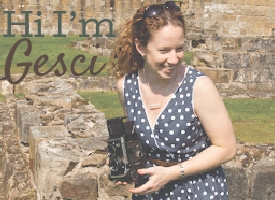We headed out to a couple of locations that were only open on weekends and some other ones that were nearby.
The first place we headed was Spynie Palace. Built in the late 13th century, it was used as the residence for the Bishops of Moray for five centuries. This is David's Tower, named after Bishop David Stewart who ordered the construction in the mid-15th century. Historic Scotland has added in basic wooden flooring and repaired steps so that we were able to go to all the levels.
The shields of bishops David Stewart and Patrick Hepburn, on the wall of David's Tower.
Spynie Loch. Once a significant sea-loch used by fishing and merchant vessels, it was a main reason for the location of the palace. The bishop's residence was moved to Elgin (a future post) at a later time, as it was easier to defend and closer to the market.
View from the top of David's Tower.
These little plants were growing in between the stones of the walls and ceilings of the ruins. I thought they were cool.
A mouse in the cellar! There were actually several, and I was reluctant to scare them with my flash, so the picture's a little blurry, but I thought it was fun to see mice in the cellar of a palace. Sadly they didn't sew me a new dress or sing me a song.
Interesting feature on the roof.
This is Cullen, an unufortunately named beautiful little coastal town we drove through.
Railroad bridge in Cullen.
More Cullen.
I was really excited to go to another place in our book, Deer Abbey. Say it out loud. Do it. I dare you not to laugh. Anyway, the ruins were disappointing, but it had a fabulous entry (seen here) and high stone wall.
The gatehouse of Tolquhon Castle. A very picturesque ruin, it was built not as a defense/wartime castle but as a beautiful residential home.
Tower in the main house of the castle. We were able to go all the way up.
More views of the castle.



























No comments:
Post a Comment
Thanks so much for stopping by! I can't wait to read your comment!